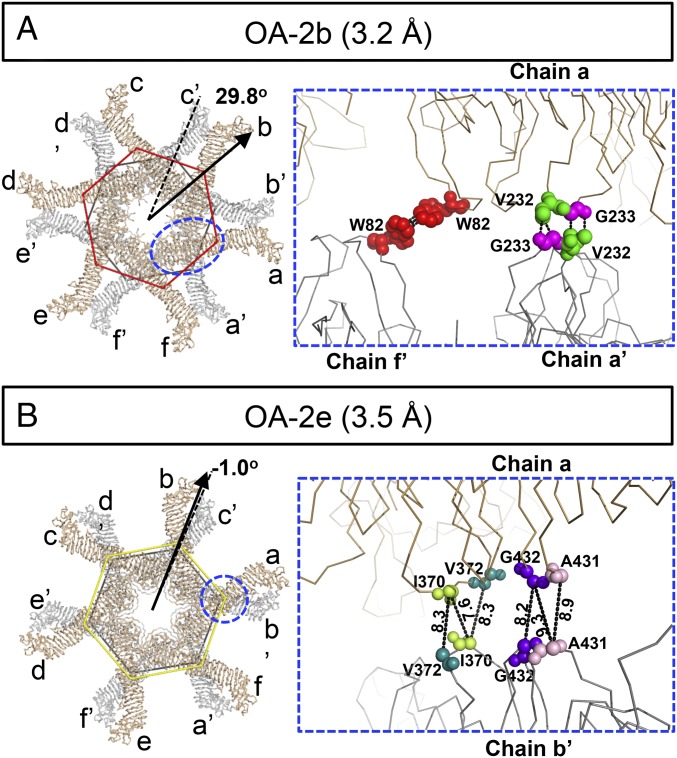Fig. 4.
Hydrophobic interactions between two stacked VacA hexamers. (A and B) Models of two high-resolution dodecamers (OA-2b and OA-2e). In each figure, the Left shows the overall architecture of the lower (gray) and upper (sand) layers of the VacA dodecamers. The arrangements of individual layers of dodecamers are represented as polygons, whose sides are connected by the mass centers of individual domains. The rotation angles of the upper-layer hexamers (color coded from respective conformation) with respect to the lower-layer hexamers (black polygon) are shown. A, Right shows the two different patches of hydrophobic interactions that stabilize the OA-2b dodecamer. The key residues are shown in sphere. B, Right shows the residues that likely contribute to the stability of two stacked hexamers in OA-2e, with the closest distances (in angstroms) between Cα from different chains shown. The backbones of key residues are shown in sphere. W82 (red), V232 (green), G233 (magenta), I370 (lime green), V372 (dark cyan), A431 (light pink), G432 (purple).

